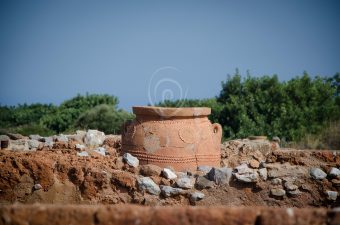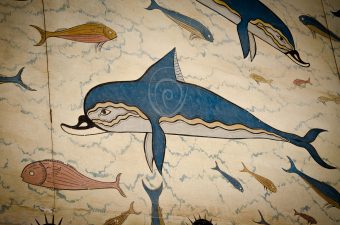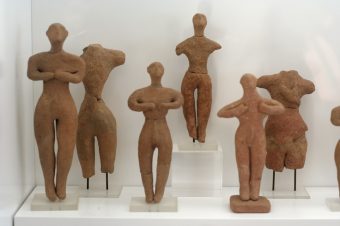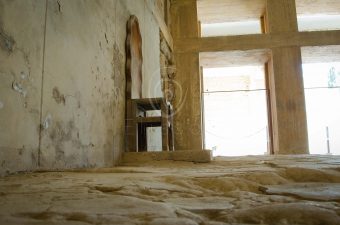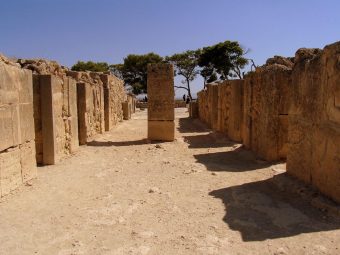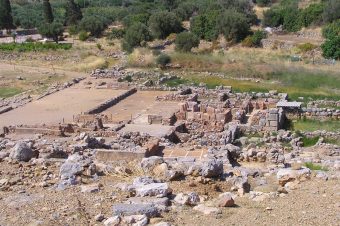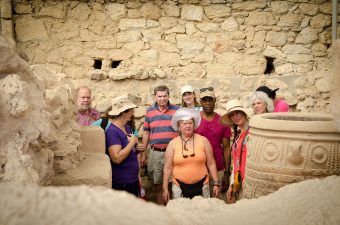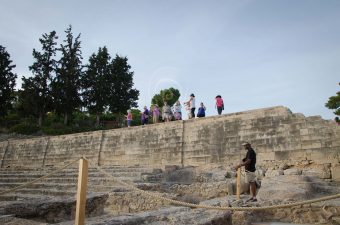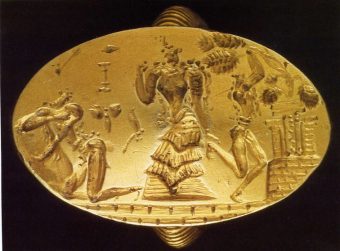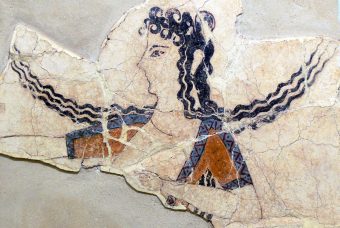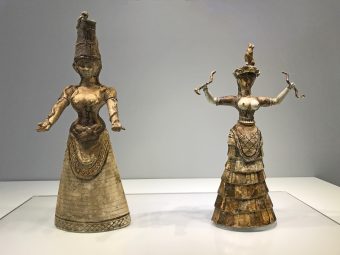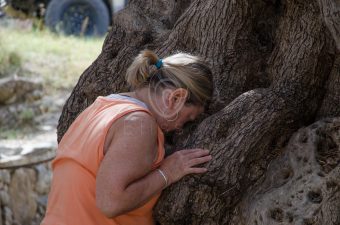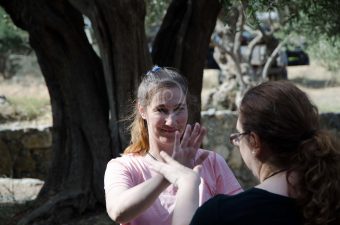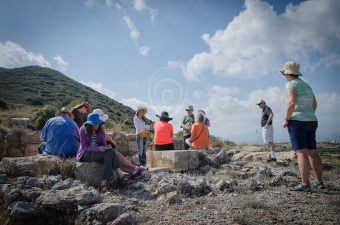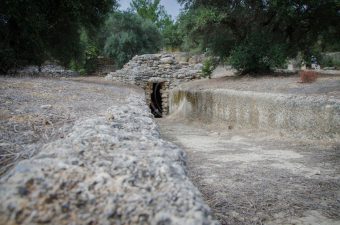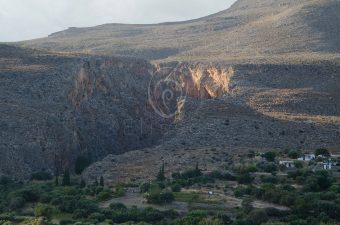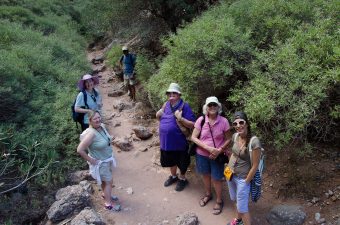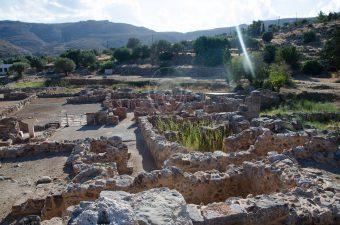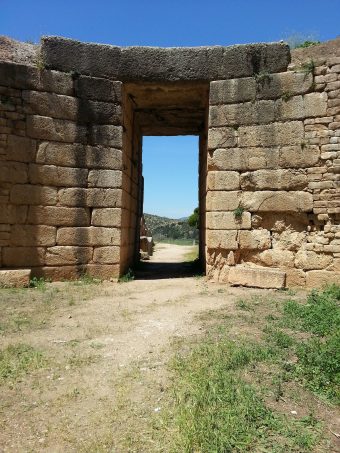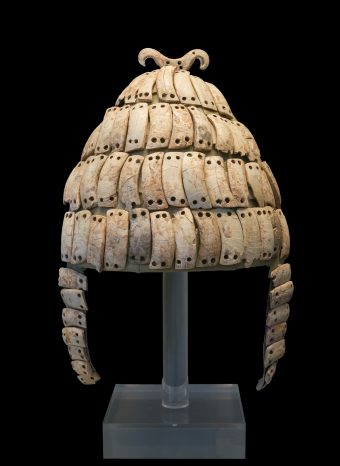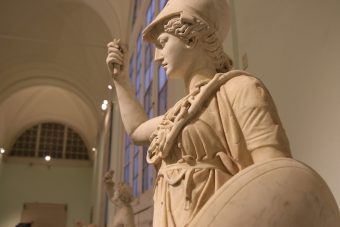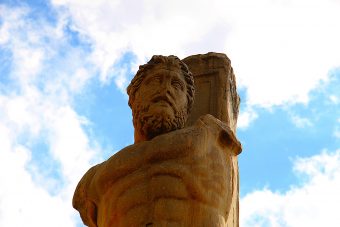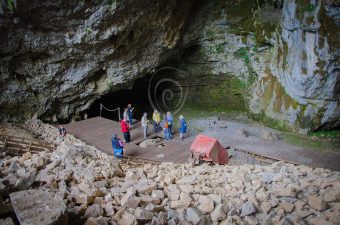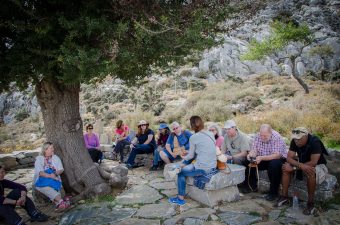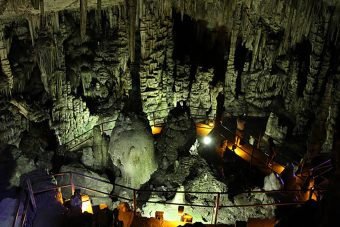Throwback to the Bronze Age in Crete
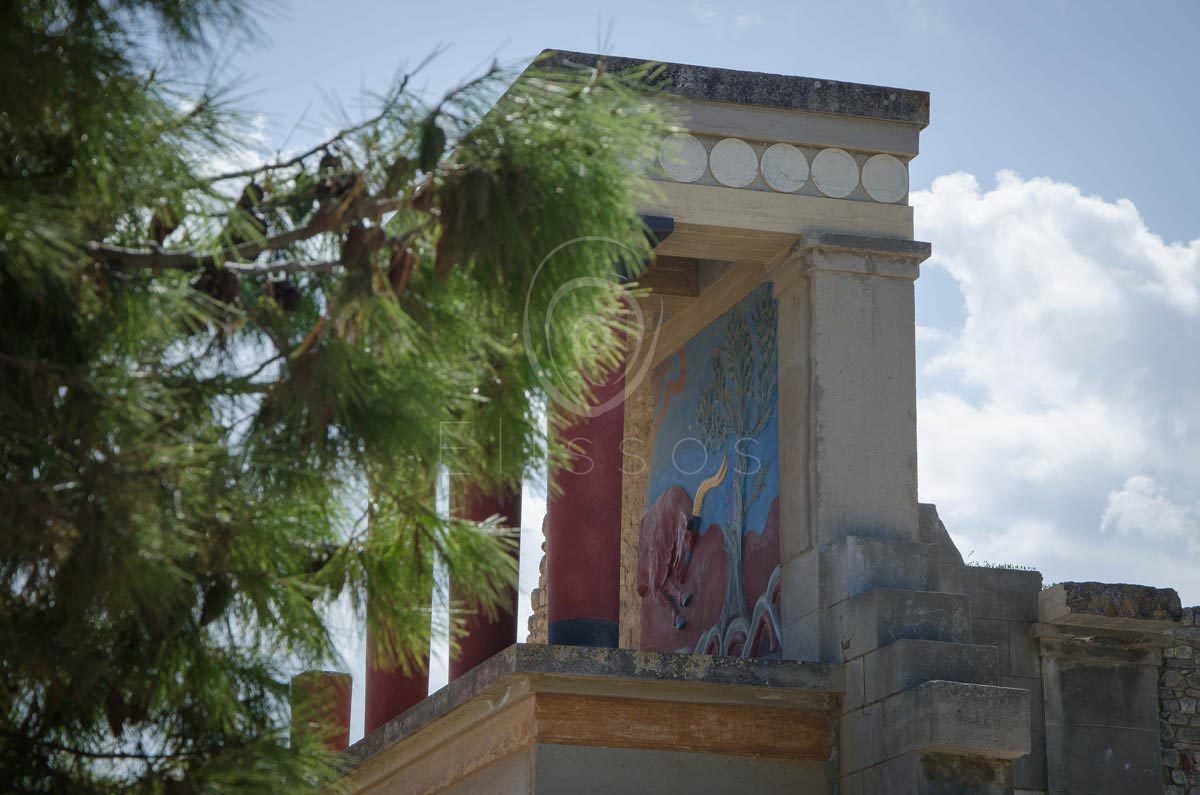
In this article, we will walk you through the Bronze Age in Crete. We will discuss the two civilizations that impacted Crete historic course the most, the Minoan and the Mycenaean.
Through this blog article, we aim to shortly present you the Bronze Age period in Crete, on one hand. On the other, our goal is to link modern-day experiences in Crete with the 5,000-year-old history of the land. We hope you enjoy our throwback to the Bronze Age in Crete. Let’s begin!
Minoan Civilization
General Overview in Greece and Crete
In mainland Greece, the Bronze Age was mainly characterized by the flourishing of the Mycenean Civilization at 1600 B.C – 1100 B.C. The Mycenean Civilization evolved eventually into the Greek Civilization of mainland Ancient Greece. Regarding the islands of the Aegean Sea, the Bronze Age commenced with the Cycladic Civilization 3200 B.C. – 1050 B.C.
Specifically in Crete, the Minoan Civilization developed during the Early Bronze Age, starting at around 3000 BC. The Bronze Age in Crete mainly concerns the period from 3000 to 1100 BC. In particular, there are 3 dominant events of this period. Firstly, is the construction of Knossos Palace in 2000 BC. Secondly, is the eruption of the volcano of Thera around 1600 BC, and thirdly, the final destruction of the Minoan Palaces at 1450 BC.
Sir Arthur Evans‘ Role in Defining and Dating the Minoan Civilization
Arthur Evans was a Welsh antiquarian who excavated the Palace of Knossos. He named the civilization „Minoan“ from the mythical king of Knossos, Minos. Arthur Evans completed his analysis of the Minoan Civilization in 1935. In his studies, he shows chronologically the cultural development, prosperity, and decline of the Minoans. To clarify precisely, the dating of the Minoan Civilization is under constant review. Evans relied his chronology on the details of the ceramic typology. He, therefore, divided the Minoan civilization into 3 major periods. The Early Minoan, the Middle Minoan, and the Late Minoan with subperiods. However, in 1941, a Swedish archaeologist replaced the Late Minoan period with the term „Mycenaean“.
The Minoan Palaces in Crete
The Palaces of Knossos, Phaistos, Malia and Zakros
At the beginning of the 2nd millennium BC, there were fundamental changes in Minoan society that profoundly influenced its cultures. The first palaces were erected around 2000-1900 BC. These palaces were Knossos, Phaistos, Malia, and Zakros. In fact, the design and construction of the first Minoan palaces share similarities with the Sumerian palaces in the region of Syria. For example, Ebla and Mari. Certainly, these monumental complexes reflect the existence in Crete of a strict social stratification and well-organized administrative structure.
Moreover, the findings from the palaces and tombs confirm the growing relations of the island with the East. Thereupon, the gradual integration of Crete in a complex network of economic and political relations with the wider region of the eastern Mediterranean is clear. The Minoan palaces were at the same time, huge religious centers. They played a leading role in the religious and spiritual development of the palace inhabitance and their visitors.
Palatial Tours Designed by Elissos
As a starting point, we at Elissos believe that every traveler who wishes to explore the Minoan Civilization of Crete should begin with a visit to Knossos Palace. For this reason, we are proud to suggest our purely cultural and historic tour of the Knossos Palace and Heraklion Archaeology Museum. In this tour, we urge you, through your expert tour guide, to travel through time and explore this 5000-year-old civilization. Not only walk on the ancient soil around the Knossos Palace, but also learn about the ancient arts, practices, and rituals.
Our approach is primarily experiential. This is a Travel through time-space-myths-arts and ritual practices. Moreover, allow your tour guide to walk you through the recently renovated Archaeological Museum of Heraklion. There, witness up close the brilliant Minoan artifacts and better understand their importance. Finally, we are positive that this tour will end with you feeling blessed and eager to find out more about the Minoans!
Well, you are in luck! Continue this wonderful Mind-Body-Spirit experience with our next South Crete Magic Tour. Visit the Palace of Phaistos, the second biggest Minoan Palace of Crete, resident of the mythical King Radamanthis, Mino’s brother. In order to fully grasp the magnitude of the Palace, let your expert guide show you around the 8000sqm „prehistoric city“. The insights and the extensive knowledge you will gain will be immeasurable! Then, visit with us the equally important Minoan Villa of Agia Triada. After your lunch break, your tour continues with a final stop at the Roman Capital of Crete, the town of Gortyn. See the oldest Roman theater and last but not least the oldest codified law system of Europe!
The Minoan Religion
The Minoan Great Mother Goddess
The Minoans worshiped the Earth in all of her forms and aspects. Their Earth Goddess appears to them through ritual practices in several „epiphanies“ and with several names. Among them is „Potnia Thiron„, The „Snake Goddess„, and the „Great Mother Goddess“ as it is evident through figurines, seal stones, and frescos. It seems, that in the Minoan Civilization, the presence and role of the Great Mother Goddess are very important and dominant. They are clear and present in almost all expressions of everyday life. In fact, the Minoan Fertility Goddess ruled over all forms of life and death.
As the goddess of fertility, the bull was her symbol. As Potnia of the Beasts, she was depicted surrounded by two lions and standing on a high point. Moreover, she was also the goddess of plants and trees and the goddess of the water and the rocks. The Goddess of the underworld aspect and of the chthonic side of life. She was in fact the protector of marriage and the family home. The goddess of the snakes, and therefore of healing and rebirth.
Furthermore, the Goddess was originally worshiped in caves and on the tops of mountains. Later in-house-hold and palatial sanctuaries. In her worshiping the natural rock played a big role, emphasizing her indigenous appearance. The enigmatic Lustral Basins of the Minoan palaces are considered to have been areas to purify and rejoice and were dedicated to the goddess. Her symbols were, apart from the bull, the tree of life, the snake, the star, the pillar, the dove, the lion, the griffin, the double axe, the trident, and a plethora of more.
Minoan Goddess Oriented Experiences Designed by Elissos
Meeting the Minoan Civilization through the exploration of its ancient Religion, we find essentially important for the appreciation of the Minoan Cult and the deeper understanding of the Minoan people. In order to experience the Minoan religion, to the possible extent, a deep connection with the Earth and Land of Crete we find primarily essential. Through our Minoan Goddess Oriented Experiences, you can achieve this unique deeper re-connection. Explore with us Sacred Sites of great importance, Minoan and ancient Greek Arts through our exclusive experiential labs, and unique Nature Paths.
In Central Crete, participate in our Artistic and Spiritual Experience, where you can explore sacred hills, tap into your creativity, and enjoy lunch at one of the most traditional and aristocratic villages of Central Crete. The Great Mother Goddess is linked to Juktas Mountains as she was worshipped on those divine hills for over 2000 years. Feel the energy and sense the bond between her and the Minoans that are very much „alive“. After paying a visit to several sacred sites on Juktas, we urge you to continue your Mind-Body-Spirit adventure by uncovering the secrets of ancient Greek theater. As soon as you learn a lot about the origins and development of ancient Greek theater, the more interactive part of this theatrical workshop starts. We urge you to let loose and allow your body to move, as you not only act but also dance and speak in a self-expressional mode.
Minoan Nature Goddess Experience Designed by Elissos
Our Mystical Palace of Zakros in East Crete, offers a complete historical, natural, and spiritual experience. Get in touch with your inner self and meditate around the oldest olive tree in the Mediterranean. Just the sight of it will have you in awe! Take all of your positivity and bring it to the next part of this sacred experience. Hike the Ravine of the Dead! After a 3 hour magnificent hike, you will end up at the entrance of the ancient Palace of Zakros. The mesmerizing scenery will captivate you, as walk around the enormous 4000-year-old palace. Finally, have a mouthwatering Cretan lunch at Kato Zakros where you can discuss all about your day over some local wine.
The End of the Minoan Civilization
Around 1700 BC, the Minoan palaces were destroyed by earthquakes and quickly rebuilt in an even more monumental way. The Minoan rule, however, was to end violently around 1500 BC. Most of the palaces and cities of Crete were destroyed almost simultaneously by earthquakes, without ever being able to really recover. The reasons for the disaster are not clear. The effects of the cosmogenic eruption of Thera volcano a few decades earlier were probably one of them. Nevertheless, the collapse of the Minoan palace system is an extremely complex phenomenon. It is probable that more than one factor is responsible. For example, possible pressures from the developing of the Mycenaean centers, as well as the exhaustion of the limits of the Minoan economy itself.
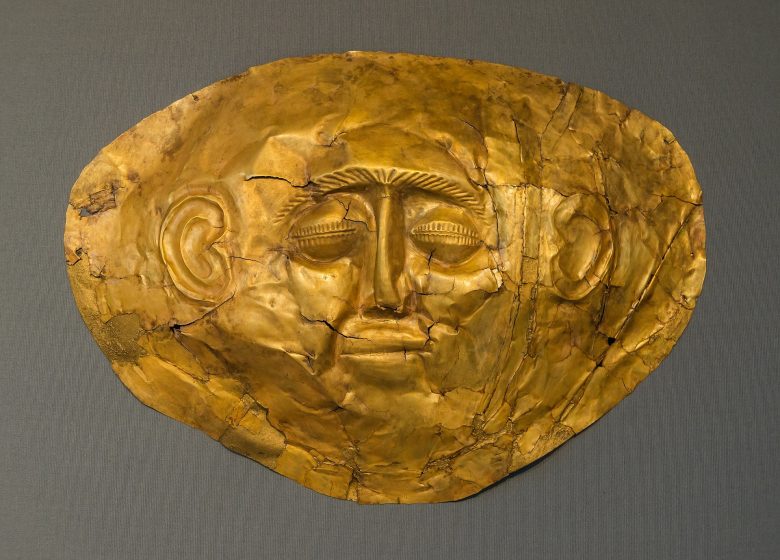
Mycenaean Civilization
General Overview in Greece and Crete
The Mycenaean Civilization was the first Greek civilization of the Late Bronze Age. It developed during the period 1600-1100 BC. mainly in central and southern mainland Greece. Furthermore, the name „Mycenaean“ comes from the first archeological site where it was located, the renowned Mycenae of Argolis, which was one of its most important early Greek centers. During its prime, it spread to Crete, the Aegean islands, and the Eastern Mediterranean but also to Cyprus. In addition, the Mycenaean Civilization is identified with the first period of Greek Culture, the Late Helladic Civilization. It is traditionally classified as prehistoric, as our knowledge of it to date is based mainly on archaeological finds.
The Minoan tradition, however, remained alive after the catastrophes of 1500/1450 B.C. The conquest of Knossos by the Mycenaeans around 1450 BC. paved the way for the transmission of the most brilliant Cretan achievements in mainland Greece: palace architecture, writing (in the form of Linear B), and religious iconography (through frescoes and seal stones). At the beginning of the 14th c. B.C, however, the palace of Knossos was permanently destroyed. Then, it seems that Crete got politically divided into smaller entities. The centers that continued to flourish in later periods, such as Kydonia, Kommos, and Knossos itself. Almost at the same time, the first Mycenaean palaces appeared in mainland Greece.
The architecture of the Mycenaean Palaces
Mycenaean palaces were buildings much simpler, smaller in size, and yet influenced by the Minoan palaces. Minoan influences are observed in the materials with which they were built, but also in the layout of the space. The large central courtyards, skylights, the ceremonial storage rooms, the drainage system, and the decorations dominated. Nevertheless, the Mycenaean palaces did not have the same splendor. The core of these palaces was the mansion. At the back of which there was the royal throne and around its various other rooms and stairs for the upper floors. However, there were no living quarters for the craftsmen. It is noteworthy that in both cases, trade depended directly on the palace. To sum up, the leader and highest in the hierarchy was always the king of the palace, who resided within it.
The Mycenaean Religion
The Greek Gods „Pantheon“ Religion
The similarities between Mycenaean and Minoan religious iconography and Art led scholars to believe that the Mycenaean beliefs were completely identical with Minoan, having Eastern roots as well. However, the reading of the texts of the Mycenaean Linear B Tablets, revealed a different picture of the Mycenaean religion. Most importantly, the texts of the palace plaques mentioned the names of gods of the Greek Pantheon. For example, a few of the Gods were Zeus, Hera, Poseidon, Artemis, Hermes, and Dionysus.
Additionally, while the reference to „Potnia“ was identified with the Minoan Goddess and elsewhere with the goddess Athena or Artemis. Thus, the Pantheon of the Mycenaean era is considered today a combination of elements that expresses the coexistence of local tradition with survived Minoan elements. Finally, the parallel worship of deities of different origins shows that the Mycenaeans took from the Minoan worship only whatever did not contradict their religious traditions.
Mycenaean Pantheon Oriented Experiences in Crete Designed by Elissos
Our Mysteries of the Cretan Born Zeus experience takes you back to when the ancient Cretans worshipped Olympus‘ Father of Gods, Zeus. We urge you to hike up to Ida Cave and feel the energy all around you. The myth has it, that it is where Zeus, the God of all Gods was born, by his mother Rhea. Moreover, we urge you to explore with your expert tour guide the historic and cultural path on how the ancient Cretans went from worshipping the Minona Mother Goddess to the Mycenaeans worshipping of the Greek Pantheon. After walking on that sacred soil, it is time for you to visit amazing traditional mountainous settlements. There, not only will you enjoy a special interactive folk art workshops, but you will also have the best Cretan lunch in a shepherd’s hut!
The biggest God of all mortals and immortals, Zeus, has been connected with the two most important Caves of Crete. Through our Lassithi Plateau and Diktaion Andron Experience, we urge you to delve deeper into the Myths. Certainly, the myth explains that after he was born in Idaion Andron, his mother Rhea took Zeus to the Cave of Dikti, to the so-called Diktion Andron in order to find refuge and protection from his father Kronos. There, Zeus was raised with the milk of the Cave Nymph or goat „Amalthia“… Visit this amazing Cave-Temple in East Crete and reveal more on the worshipping of Zeus in Crete and the Cave symbolism. Also, enjoy a wonderful drive through traditional villages and beautiful local areas, express yourself through a pottery workshop, and dance in the steps of the Cretan Born Zeus!
Explore more of our Minoan and Mycenean Crete Oriented Experiences!
In case you have many different interests and would like to combine them all, you may Create Your Own Experience!
We look forward to hosting you as our Guests!

